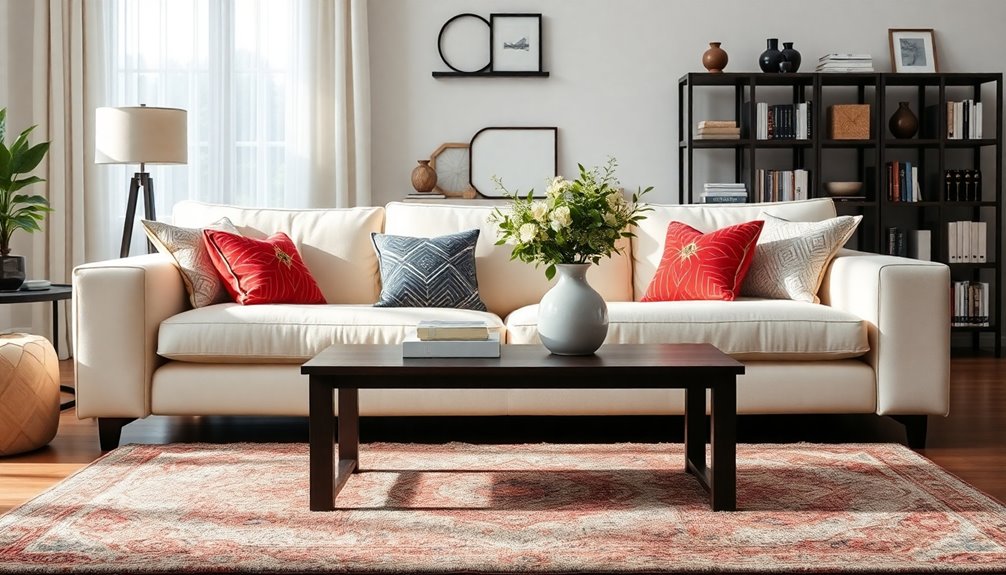To buy furniture, start by identifying your needs for each room. Measure your space to ensure the furniture fits well and allows for easy movement. Set a budget that prioritizes essentials and considers quality over decorative items. Look into materials that offer durability and aesthetic appeal, and test the furniture for structural integrity before purchasing. Don't forget to check for any safety features, especially if you have kids or pets. With these steps, you'll make informed decisions that enhance your home. There's much more to explore about choosing the right pieces that suit your lifestyle.
Key Takeaways
- Determine the primary function and needs of each room to select appropriate furniture that matches your lifestyle.
- Measure your space accurately, including doorways and fixed features, to ensure furniture fits and allows for movement.
- Set a realistic budget by prioritizing essential items and exploring payment options or seasonal sales for savings.
- Choose durable and eco-friendly materials that suit your aesthetic preferences and require manageable maintenance.
- Test furniture quality by inspecting for defects, ensuring structural integrity, and verifying safety compliance before purchasing.
Determine Your Needs

When you're ready to buy furniture, the first step is to clearly determine your needs. Start by identifying the primary function of each room. Is it a living room for entertaining, a home office for productivity, or a dining room for family meals? Each purpose dictates essential furniture pieces, like sofas, desks, or dining tables.
Next, assess how many people will use the space. Consider their age and specific needs—do you have children or pets? Ensure your choices are comfortable and accessible, and think about whether you need adjustable or customizable options. Choosing materials like oak or maple can provide durability for high-traffic areas.
Evaluate your lifestyle and habits, too. If you entertain often, you might need versatile or extendable furniture. Additionally, understanding the dimensions of your space will help you choose pieces that fit well without overwhelming the room. Also, think about durability and maintenance—these factors matter if you have kids or pets. Sustainable materials can enhance the overall ambiance while being eco-friendly.
Finally, prioritize must-have features for each piece. List requirements like storage options, ergonomic designs, and tech integration. Balance your budget with quality and style, ensuring the furniture complements your room's décor. By determining your needs thoroughly, you'll make informed choices that align with your lifestyle.
Measure Your Space
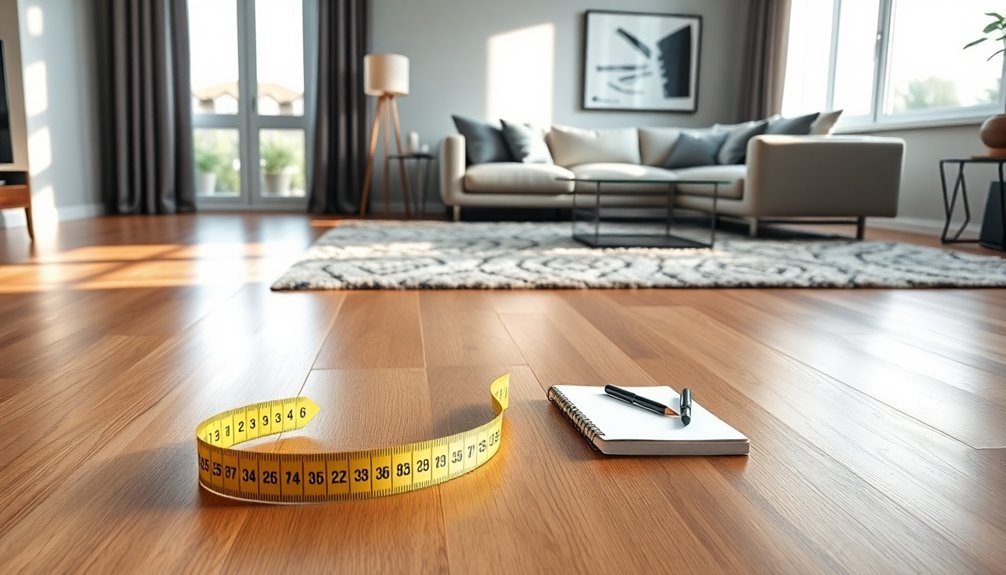
Before diving into furniture shopping, it's crucial to measure your space accurately. Start by grabbing a tape measure and getting the exact dimensions of your room's length, width, and height. Record these measurements for future reference, and if your room has an irregular shape, break it down into smaller sections. Don't forget to account for architectural features like alcoves and bay windows, as well as the locations of windows, doors, and electrical outlets.
Next, measure all doorways and hallways your furniture will have to pass through. Include any trim or molding in these measurements to ensure your new pieces can navigate smoothly without obstruction. Double-check these dimensions to avoid any delivery headaches.
Also, consider fixed features within the room, such as radiators or built-in shelves. Measure the space between these features and the walls, and be mindful of obstacles like heating vents or plumbing fixtures. To ensure your furniture fits well, always account for fixed features when planning your layout.
Finally, sketch a simple floor plan, marking the measurements and locations. Use painter's tape to outline where the furniture will go, helping you visualize the layout and ensure you leave enough space for comfortable movement.
Set a Budget
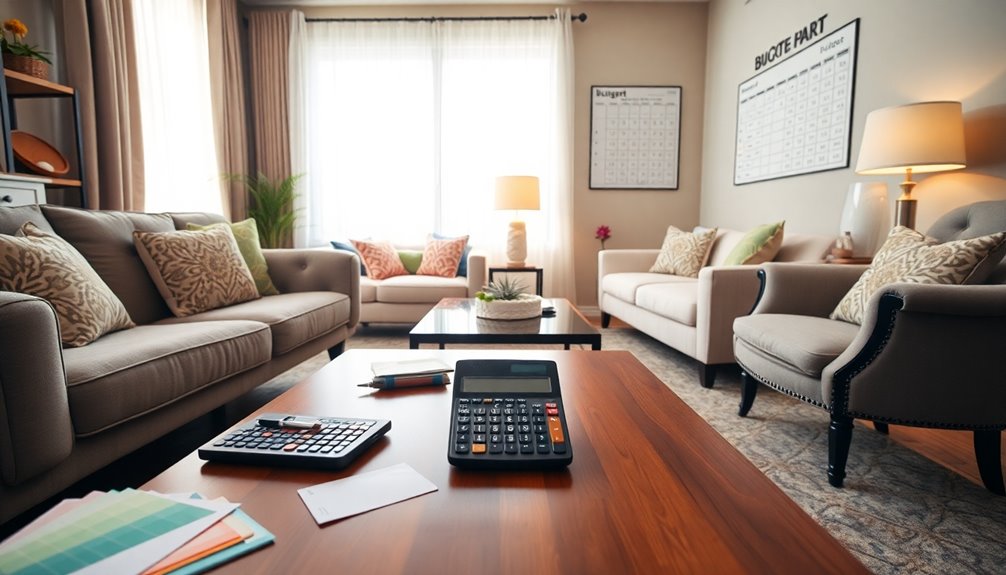
Setting a budget for your furniture purchase is essential to ensure you make informed decisions without overspending. Start by evaluating your financial condition to set a realistic budget. Consider how many pieces you need and the quality you expect. It's wise to factor in unforeseen costs and conduct a price search to avoid surprises. Additionally, knowing the operating hours of local stores can help you plan your shopping trips more effectively.
Next, prioritize essential furniture. Focus on necessities like beds, mattresses, and dining tables first. Identify what you need for each room, allocating more funds to essential pieces rather than decorative items. Quality should be a priority for these essentials. Additionally, consider the impact of home size on your overall budget, as larger homes typically require higher furnishing costs.
Break down your budget by room. For example, set aside $900-$1,300 for a living room sofa and $500-$3,000 for a bed in the bedroom. Adjust according to the specific needs of each space.
Lastly, explore budget-friendly payment options. Look into in-store financing, layaway, or rent-to-own choices. While credit cards can help, avoid accumulating debt. Keep an eye on seasonal sales and consider second-hand items from thrift stores or online marketplaces to stretch your budget further.
Consider Materials and Quality
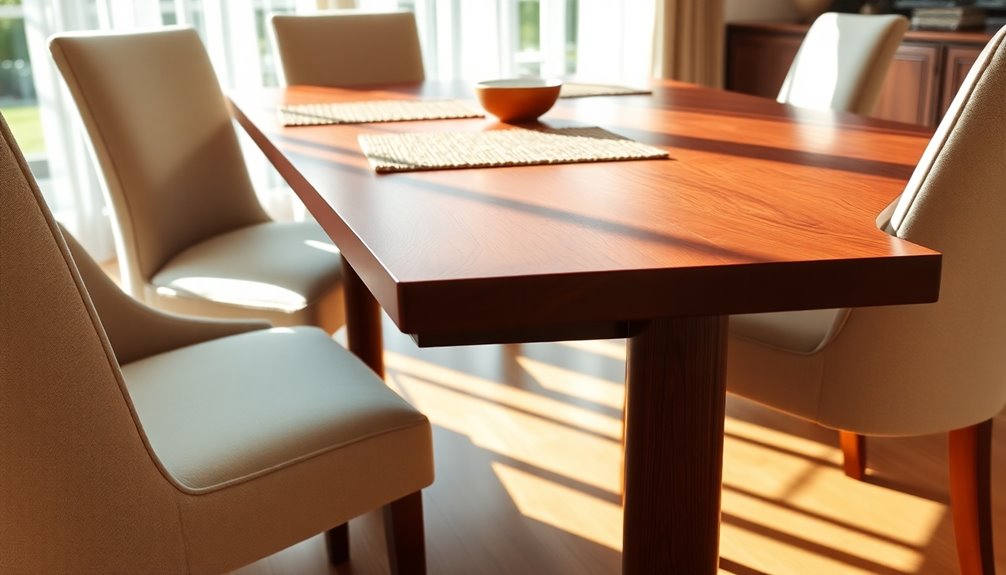
Understanding materials and quality is key to making smart furniture choices that align with your budget. When selecting furniture, consider the durability and weather resistance of different materials. Teak is a top choice for outdoor settings due to its natural resistance to water and insects, though it can be pricey. Rattan and resin offer great options for versatility; while rattan handles varying climates well, resin is perfect for all-weather use. Additionally, choosing non-toxic plants can enhance your indoor environment alongside your furniture.
Sustainability is another factor you shouldn't overlook. Bamboo and rattan are eco-friendly choices that contribute to a natural aesthetic, while parawood (rubberwood) and acacia wood provide durability and unique designs. Additionally, opting for materials with high durability ensures that your furniture can withstand various weather conditions and retain its structural integrity over time.
Maintenance varies by material. Teak requires occasional oiling, while resin is easy to care for and resistant to moisture. GRC offers the strength of concrete with added flexibility, being lightweight and durable.
Lastly, think about aesthetics. Teak adds warmth, and acacia wood brings a one-of-a-kind look. Rattan suits various decor styles, making it a versatile choice. By considering these factors, you'll find furniture that not only fits your style but also meets your quality expectations.
Test Furniture Quality
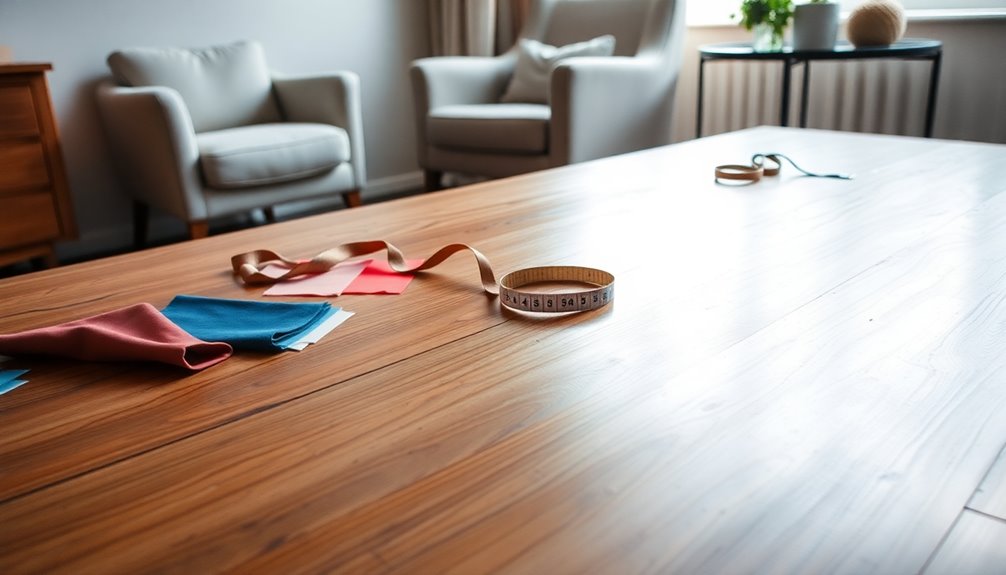
When it comes to purchasing furniture, testing its quality is essential to ensure you're making a wise investment. Start by inspecting materials and components. For wood, check for the type, knots, warping, and any damage. With upholstery, assess the fabric quality, stitching, and ensure it fits snugly without ripples. Inspect metal parts for rust or sharp edges, and make sure surfaces are smooth and uniformly finished.
Next, focus on structural and functional testing. Ensure the frame is sturdy and joints are secure. Check the load-bearing capacity to confirm it can handle weight without failure. Test functionality by sliding drawers, opening hinges, and ensuring locks work properly. Regular inspections help maintain consistent product quality across different suppliers, which is essential when selecting furniture.
Don't forget safety and compliance. Verify safety mechanisms in furniture like cribs and check that sharp edges are rounded. Lastly, conduct a final inspection, checking for cracks or scratches, ensuring dimensions meet specifications, and confirming packaging standards are adhered to. By thoroughly testing furniture quality, you can confidently choose pieces that are durable, functional, and safe for your home.
Frequently Asked Questions
How Do I Know if a Style Suits My Home Decor?
To know if a style suits your home decor, start by identifying the primary aesthetic of your space. Look at existing colors, materials, and architectural elements. You should consider how each design choice complements your daily activities and overall ambiance. Create a mood board to visualize your preferences, noting recurring themes. By reflecting on these aspects, you'll determine which styles resonate with you and enhance your home's unique character.
What Is the Best Way to Arrange Furniture in a Room?
To arrange furniture in a room effectively, start by identifying a focal point, like a fireplace or TV. Position seating to face this point, keeping conversation in mind. Balance large and small pieces to create harmony, and ensure there's enough space for movement—aim for 30-36 inches between items. Avoid pushing furniture against walls; instead, create an inviting layout that encourages interaction and feels spacious. Use a floor plan to visualize your arrangement before moving pieces.
Should I Buy New or Used Furniture?
When deciding whether to buy new or used furniture, consider your budget and style preferences. New furniture offers durability, warranties, and customization options, but it comes at a higher price. On the other hand, used furniture is more affordable and environmentally friendly, plus you might find unique pieces. However, be cautious of potential hidden issues and variable quality. Weigh these factors to determine which option best suits your needs and lifestyle.
How Do Warranties and Return Policies Work for Furniture?
When you're considering furniture, understanding warranties and return policies is crucial. Manufacturer warranties typically cover defects for a limited time, usually one year, while furniture protection plans can cover accidental damage and extend beyond that initial period. Return policies differ by retailer; you might face strict time limits and restocking fees. Always check for exclusions, like normal wear and tear, to ensure you're fully informed before making a purchase.
What Are the Best Online Resources for Furniture Shopping?
When you’re looking for the best online resources for furniture shopping, consider platforms like Amazon and Wayfair for a vast selection and quick shipping. If you want customization, Joybird and Apt2B offer unique options tailored to your style. For high-quality pieces, check out Pottery Barn and Arhaus. Don’t forget about Article, which combines trendy designs with free shipping. Each of these stores caters to different needs and preferences, making your shopping experience easier. Additionally, many of these retailers offer easy return policies, which can provide peace of mind when making larger purchases. If you find yourself with old furniture that no longer fits your style or needs, consider donating furniture to Salvation Army, as they appreciate gently used items that can help those in need. By decluttering your space while giving back to the community, you can make room for your new purchases without guilt.
Conclusion
Now that you've figured out your needs, measured your space, set a budget, and considered materials, you're ready to make an informed decision. Don't forget to test the furniture quality before you buy. Sit on it, feel it, and imagine how it'll fit into your home. Trust your instincts and choose pieces that not only look good but also suit your lifestyle. Happy furniture shopping—your perfect piece is out there waiting for you!
